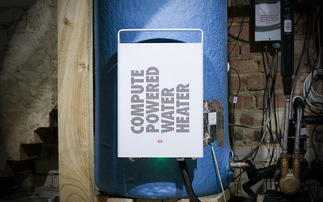In the latest in our series of features with Global Action Plan on energy management best practices, Bishop Auckland Hospital reveals how pioneering lighting technology is helping to slash costs
Light sensors have become an increasingly common fixture of modern offices, allowing facilities managers to slash unnecessary energy usage without having to constantly hassle colleagues to turn off lights. However, one of the most common complaints about these motion-detecting systems is that anyone who spends too long sitting quietly at their desk can on occasion find themselves plunged into darkness, which is the last thing you want if you work somewhere like a hospital.
Thankfully, this has not proved a problem at Bishop Auckland Hospital in County Durham where new ultra-energy-efficient lights and sensor systems are winning rave reviews. The replacement of about 60 40W fluorescent tubes with new ultra-efficient 21W tubes and the installation of lighting sensors on corridors on the ground and lower ground floors have not only helped to halve energy use, they have also made walking along some of the hospital's corridors a memorable experience.
"The feedback has been great," explains Andi Forrest, general manager for ISS Facility Services, the company that manages the hospital's facilities through its PFI contract. "People say it is like something out of the Matrix as you walk down the corridor and it turns on the lights."
The lights typically dim, rather than turn off, when no one is around, but they are programmed to power up instantly as they are needed. They also deliver a better quality of light than the tubes that they replace, and as a result ISS has secured praise from hospital staff and patients for turning some of the darker areas of the hospital into lighter and more attractive places to work.
However, it is the cost savings that result from more energy-efficient lighting that are undoubtedly of the greatest appeal to the hospital's managers.
"Every penny counts in the NHS at the moment," notes Forrest. "So, if this technology costs a bit more upfront, that is not an excuse not to do it when you can deliver such big savings over time."
Significantly, the upfront cost does not fall directly on the NHS Trust as under the PFI contract ISS has access to a Lifecycle Fund that it uses to make improvements to the property at certain points through the contract. It is this that has given the company the freedom to undertake the lighting replacement programme and opt for the most energy-efficient technology they could identify. Forrest says making the business case for the improvements was actually remarkably simple.
"The business case for efficient lighting is really quite easy, because the savings are so clear cut," he explains. "It is more a case of just doing the maths and demonstrating the scale of the savings that are on offer."
Once the project was approved, ISS invited a number of vendors to come in and demonstrate their technology before then selecting their preferred supplier. Now, as the project moves into its second phase, the company is looking to upgrade again and is planning to deploy about 100 LED lights in the hospital's remaining corridors, a decision that promises both further energy savings.
With the reaction to the initial deployment having been "massively positive", ISS is now looking at how LED or other efficient lighting could be extended from the corridors into wards and other parts of the hospital. Forrest explains that lighting for wards in particular has special requirements - for example, overly harsh lighting or a movement sensor that plunged bed-bound patients into darkness when they needed the light on would not be suitable. But the company has already looked at a number of efficient lamps that could meet wards' special requirements and deliver significant energy savings. Wards are unlikely to end up looking like something out of the Matrix, but they could soon be helping to deliver significant energy savings, freeing up more money for the NHS Trust to invest in frontline services.
This sponsored content was developed in partnership with Global Action Plan









